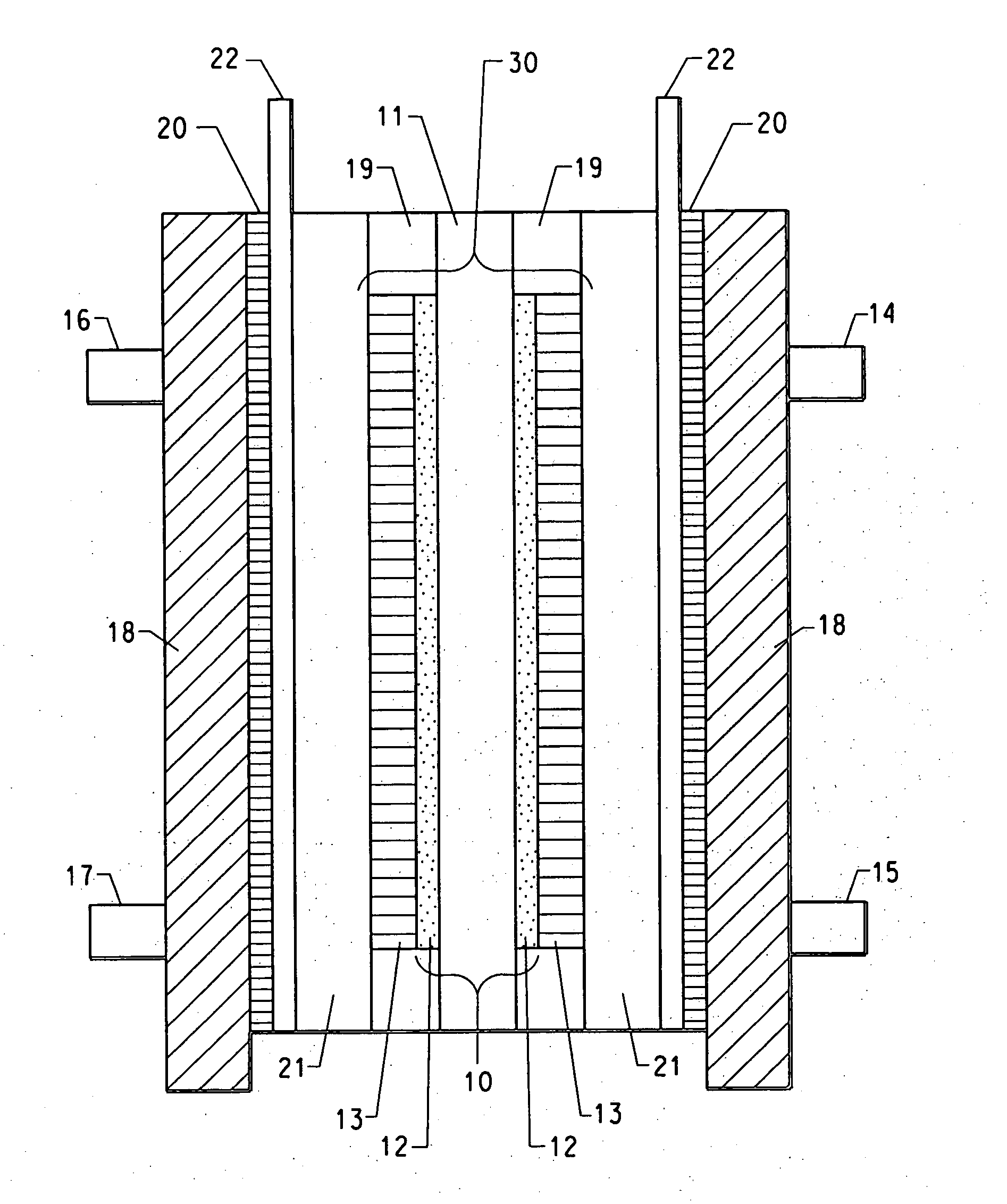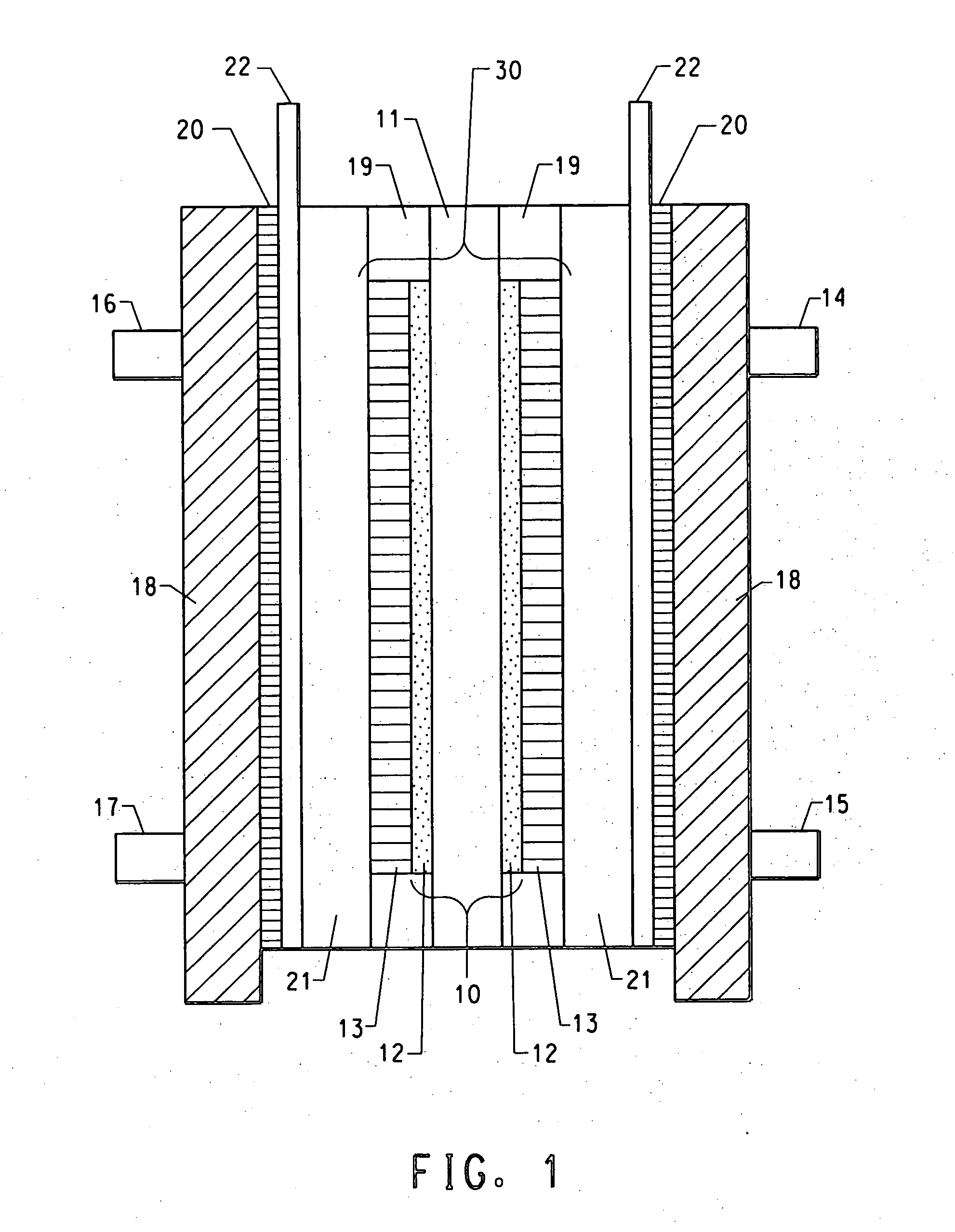Process for making cation exchange membranes with reduced methanol permeability
- Summary
- Abstract
- Description
- Claims
- Application Information
AI Technical Summary
Problems solved by technology
Method used
Image
Examples
example 1
[0070] A 8″×8″ sample of 7mil commercial Nafion® membrane in acid form (N117, H+form, E. I. DuPont de Nemours, Wilmington, Del.) was placed in a zip-lock bag. A mixture containing 1.39 g of polyvinylpyrollidone (PVP) of molecular weight 1,300,000 g (Aldrich Chemicals) dissolved in 87.7 g of water and 87.7 g of tetrahydrofuran (THF) (Aldrich Chemicals) was prepared and poured into the zip-lock containing the above Nafion® membrane. The bag was zipped, placed on a flat surface and the mixture was evenly spread over the membrane. The membrane was kept in contact with the mixture for 2 hrs at room temperature. The bag was turned upside down and smoothed every 30 minutes to ensure the membrane was in contact with the mixture. After 2 hrs, the membrane was taken out and air dried for 15 mins, then was further hang-dried over night to drive off the remaining solvent. The next day it was further dried in a vacuum oven at 70° C. for about an hour with N2 purging. The dried sample was cut int...
example 2
[0085] The same cell as described above was used to generate another set of fuel cell data using Sample 1, 2, and 3 and Control Sample A and B. This time the cell was heated to 60° C., the anode was fed with 1 .55 cc / min of 1 M MeOH / water mixtures and the cathode was fed with 255 cc / min dry air. The cell current of 3.75 A was drawn from the cell and the cell voltage was monitored. The methanol crossover decreased by 41% and 25% compared to the Control A & Control B samples respectively while the power density decreased by 10% and 8.2%.
PUM
| Property | Measurement | Unit |
|---|---|---|
| Temperature | aaaaa | aaaaa |
| Fraction | aaaaa | aaaaa |
| Percent by mass | aaaaa | aaaaa |
Abstract
Description
Claims
Application Information
 Login to View More
Login to View More - R&D
- Intellectual Property
- Life Sciences
- Materials
- Tech Scout
- Unparalleled Data Quality
- Higher Quality Content
- 60% Fewer Hallucinations
Browse by: Latest US Patents, China's latest patents, Technical Efficacy Thesaurus, Application Domain, Technology Topic, Popular Technical Reports.
© 2025 PatSnap. All rights reserved.Legal|Privacy policy|Modern Slavery Act Transparency Statement|Sitemap|About US| Contact US: help@patsnap.com



